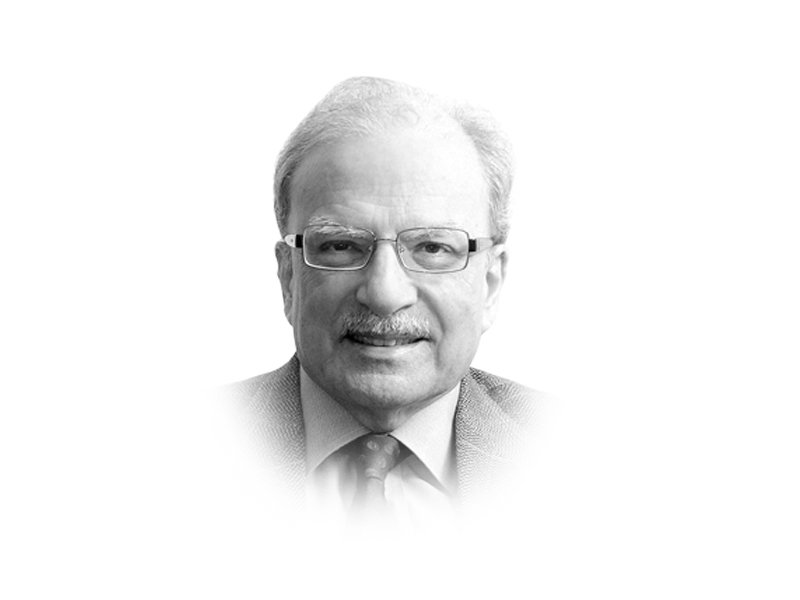
“Our negotiations team led by my colleagues Mullah Abdul Ghani Baradar and Sher Mohammed Abas Stanekzai has worked tirelessly for the past 18 months with the American negotiators to make an agreement possible,” wrote Sirajuddin Haqqani in an article published by The New York Times on the day the ceasefire announcement was made. Haqqani is the deputy leader of the Taliban and head of the Haqqani group the Americans have labeled a terrorist organisation. “My fellow Afghans will soon celebrate this historic agreement. Once it is entirely fulfilled, Afghans will see the departure of all foreign troops. As we arrive at this milestone, I believe it is not a distant dream that we will see the day when we will come together with all our Afghan brothers and sisters, start toward lasting peace and lay the foundation of a new Afghanistan.”
The American position reached after almost 18 years of bloody and costly war was that the only way out was to engage with the Taliban. However, that had to be done in a way that was sequenced and based on conditions the Taliban will need to follow. The American withdrawal will not be fully complete until the two Afghan sides — the Taliban and the government in Kabul — sat down together and worked out an arrangement for future power-sharing. Negotiations between the two sides were set to start ten days after the signing of the agreement in Doha. The Taliban expected five thousand of its prisoners to be released during this period in exchange for the one thousand they held.
The war started largely as an American-Taliban conflict. At the peak of the United States’ involvement it had 100,000 troops in the country. But in the second decade it became a localised Afghan-on-Afghan war. The number of Americans stationed in the country had declined to 14,000 with almost all the ground fighting done by the Afghans. Over the 2015-2020 period, about 50,000 Afghan police had died. The same number was on the Taliban side. Many of those fighting as members of the Afghan police force “had earned by the gun, killed by the gun, since adolescence”, wrote Mujib Mashal, the NYTs’ senior correspondent in Afghanistan who had worked for seven years in the newspaper’s Kabul office. His dispatch came from Zabul province in the country’s south. “The war, in some shape or form, was already raging before they were born. There was great bitterness on both sides. Ultimately, real peace would mean tens of thousands of Taliban fighters either laying down their arms and going home, or integrating into a united Afghan security force. For the young fighters in Zabul, even just the idea of sharing barracks with bitter and familiar enemies seems unbelievable.”
What is the process for dealing with the hatred that had built up with a great deal of suffering on both sides? Continued Mashal: “The fear was that there will not be enough time and patience for that process to work out. As for the Doha deal to succeed would require a lot of hand-holding and attention and time. Does the U.S. have the patience to stick around for that to complete in a proper way?”
The ink used for signing the peace agreement was hardly dry when doubts began to be voiced for its feasibility. Afghan President Ashraf Ghani, speaking at a press conference less than 24 hours after the agreement was signed, questioned several elements in it, including the timeline for the exchange of prisoners. He objected to the March 10 deadline for the prisoner exchange. Talks between the Afghan government and the Taliban would start on that date after the prisoners were released. “Freeing Taliban prisoners is not under the authority of America but the authority of the Afghan government,” Ghani said at a press conference in Kabul. “There has been no commitment for the release of 5,000 prisoners.” He said the prisoner swap could be discussed during talks with the Taliban, but could not be a precondition.
While the Afghan leader was questioning some parts of the deal, the United States Secretary of State, Mike Pompeo, defended it in a TV interview. No one is under any illusion that this will be straight forward. “We have built an important base where we can begin to bring American soldiers home, reduce the risk of life of any American in Afghanistan, and hopefully set the conditions so the Afghan people can build out a peaceful resolution to their now, what for them is a 40-year struggle,” he said. One sign of the agreement holding was that the level of violence remained low after the expiry of the seven-day peace set as a condition for signing the agreement. But it didn’t go away. Even the Americans were back in the air in defence of the besieged Afghan security forces in Helmand province. After staying on the ground for 11 days, they attacked the Taliban forces. Two days after the agreement was signed, the Taliban announced it had resumed offensive operations against Afghan security forces. Zabiullah Mujahid, a Taliban spokesman, said the “reduction-in-violence period is over”. US Defense Secretary Mark T Esper, who held talks with Afghan leaders in Kabul while his cabinet colleague, Secretary of State Mike Pompeo, was watching over the signing ceremony in Doha, suggested that the United States officials would not allow isolated acts of violence to derail their focus to get the parties toward negotiations.
“This is going to be a long, windy, bumpy road,” he said at the Pentagon after his return from Kabul. “That’s going to be the nature of this over the next days, weeks and months.” Esper said the United States is committed to full withdrawal within 14 months; and that the US commander in Kabul has the orders to begin the initial withdrawal reducing the size of the force down to 8,600 in the next 135 days.
On March 4, President Trump called Baradar, the Taliban leader and had a “good conversation”.
What had America achieved in its more than 18-years stay in Afghanistan?
“Americans have long run out of good reasons to continue dying and killing in a land whose tribes make it notoriously difficult to govern and whose mountainous terrain renders it impossible to conquer. American soldiers deployed to the country as recently as last week had trouble articulating what their mission was,” wrote The New York Times in an editorial that appeared under the title “A war without winners winds down”.
Published in The Express Tribune, March 9th, 2020.
Like Opinion & Editorial on Facebook, follow @ETOpEd on Twitter to receive all updates on all our daily pieces.


1730752226-0/Untitled-design-(35)1730752226-0-165x106.webp)




1729685382-0/Untitled-design-(57)1729685382-0-270x192.webp)


1730706072-0/Copy-of-Untitled-(2)1730706072-0-270x192.webp)
COMMENTS
Comments are moderated and generally will be posted if they are on-topic and not abusive.
For more information, please see our Comments FAQ